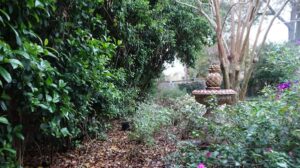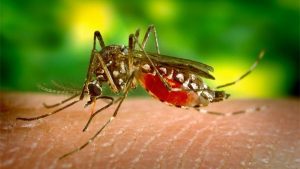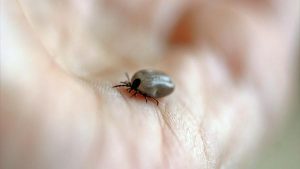It may sound like something out of a low-budget horror movie or the latest Netflix series, but Zombie Deer Disease is real – and possibly coming to a town near you.
Chronic Wasting Disease (CWD), also known as Zombie Deer Disease, has infected deer, elk and moose from 24 states and two Canadian provinces. From a family of diseases known as transmissible spongiform encephalopathies, CWD is a progressive and ultimately fatal infection that affects the animal’s brain, spinal cord and other tissues in the body. The condition is, unsurprisingly, related to Mad Cow Disease. It’s called Zombie Deer Disease because the dying animals appear emaciated and zombie-like in their final days.
The disease has no cure, and scientists believe it spreads from animal to animal via contaminated body fluids, although it could also be transmitted via shared water or food sources. CWD has been around since the 1960s and while it generally only impacts a small number of animals, in some areas where the disease exists already, rates may range from 10 to 25 percent of animals infected – and among captive deer herds in these areas, rates can be as high as 75 percent.
While that may sound scary, there is some good news: The disease has not found its way to Connecticut yet. There have been cases reported in New York and Pennsylvania, but it’s not prevalent at this point.
You may have seen headlines over the last month about the disease spreading to humans. It hasn’t. In fact, it hasn’t affected humans or domestic animals at all. Like Mad Cow Disease, the most likely way humans would contract Zombie Deer Disease is eating venison. Even then, there’s no proof a human would get ill. (A group of firefighters who accidentally ate contaminated venison in 2005 are still alive – and not one of them developed a single symptom that could be traced back to the deer.)
All that aside, we should still be careful. The CDC has released guidelines to keep everyone safe, and we’ll share them here for your convenience.
The first important thing to know are the signs and symptoms of Zombie Deer Disease or CWD. These include:
- drastic weight loss (wasting)
- stumbling
- lack of coordination
- listlessness
- drooling
- excessive thirst or urination
- drooping ears
- lack of fear of people
Remember – these symptoms are only visible at the end-stages of the disease. An animal can be infected with no visible symptoms for a full year before it appears ill, so it’s best to steer clear of all deer and their droppings if possible.
The CDC issues additional guidelines for hunters:
To be as safe as possible and decrease their potential risk of exposure to CWD, hunters should take the following steps when hunting in areas with CWD:
- Do not shoot, handle or eat meat from deer and elk that look sick or are acting strangely or are found dead (road-kill).
- When field-dressing a deer:
- Wear latex or rubber gloves when dressing the animal or handling the meat.
- Minimize how much you handle the organs of the animal, particularly the brain or spinal cord tissues.
- Do not use household knives or other kitchen utensils for field dressing.
- Check state wildlife and public health guidance to see whether testing of animals is recommended or required. Recommendations vary by state, but information about testing is available from many state wildlife agencies.
- Strongly consider having the deer or elk tested for CWD before you eat the meat.
- If you have your deer or elk commercially processed, consider asking that your animal be processed individually to avoid mixing meat from multiple animals.
- If your animal tests positive for CWD, do not eat meat from that animal.
Per the CT Post website, should you find a carcass on your property, wildlife officials recommend that the animal “be buried on the property where they were harvested if possible, left in place or disposed of at an approved, lined landfill. They should not be disposed of in ponds, lakes or waterways, which could spread the disease to previously uninfected areas.”
Zombie Deer Disease sounds terrifying, but the truth is that the risk to humans appears to minimal today. However, the CDC is taking the risk seriously, so we recommend that you pay attention any news updates regarding CWD.





